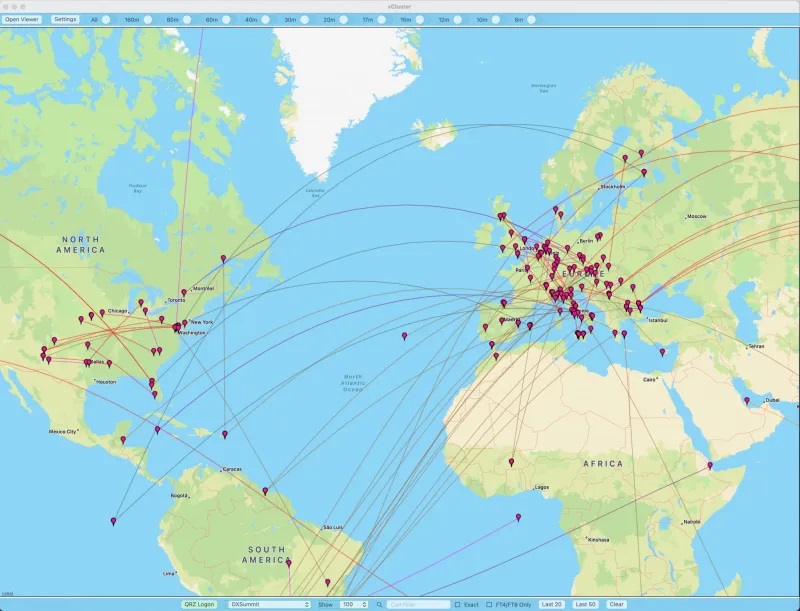xCluster version 2.1.6 released
Spots are created using the latitude and longitude of the dx station and spotter. The program has a call parsing component to determine the country for each call but can use QRZ.com for more accurate location data. Lookup priority is QRZ.com with the the call parser as a backup.
xCluster 2.1.6
There is a new version of xCluster available for download. The new release includes bug fixes and enhancements. For an overview see the original post introducing xCluster for the Mac. Please see the manual on the downloaded disk image for all of the update details.
Release Notes:
- Fixed crashes when connected to DXSummit.
- Labels on buttons were not visible on small screens.
- Minimum size of map was to large for small screens.
New Features:
- Overall size automatically adapts to smaller screens.
- The spot list can be resized vertically and horizontally.
- Moved the QRZ Logon button to the Preferences window.
- Auto logon to QRZ.com at startup if your credentials are correct.
Tthe QRZ Logon button has been moved to the preferences window. After putting in your credentials it will log you on. This is a one time operation, after that the app will automatically log you on when it starts up.
xCluster will now better adapt to smaller screens so all the labels are still visible. The author usually runs with the map in one space and put the list in a separate space on his laptop. The spot list can now be made very narrow if desired.
Note: If you quit the app with the list open it will automatically open when the app is restarted. It may be hidden behind the map, however, if the map covers the entire screen.
Note: On some M1/M2 Macs the disk image does not appear to mount i.e. the disk image does not show on the Desktop. Just go to your Finder and you will see it is mounted. You can drag xCluster to your Applications folder from there.
Download: https://w6op.com/download/xcluster/
More information at https://w6op.com/2022/xcluster/

